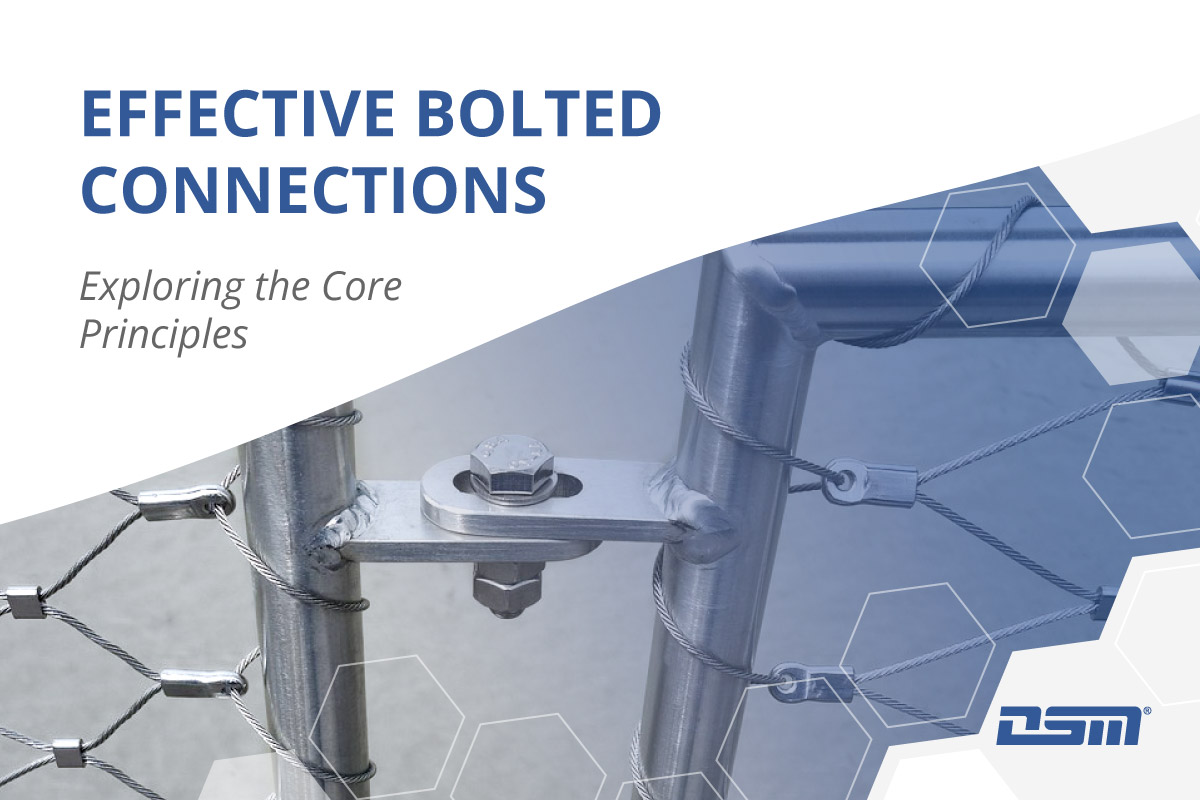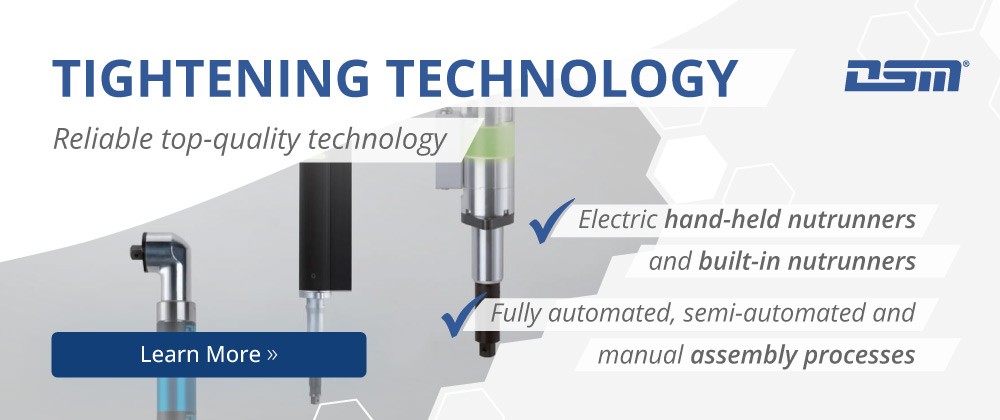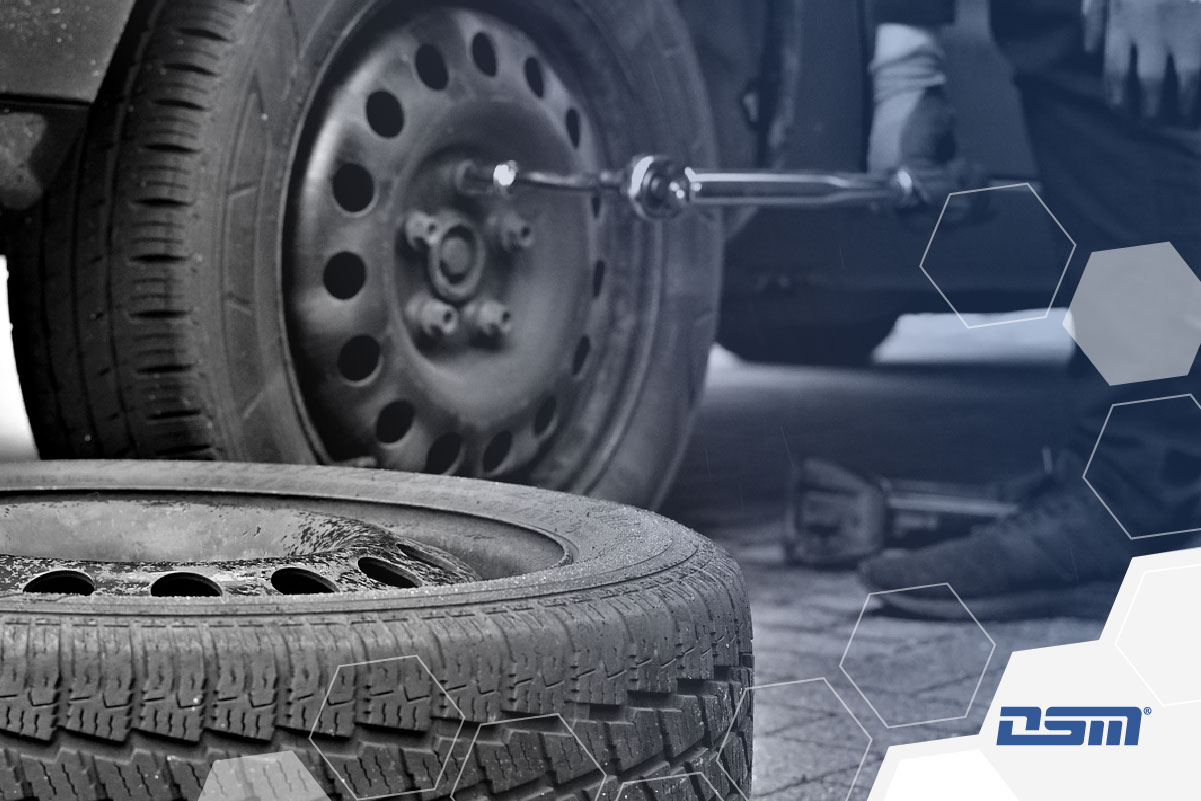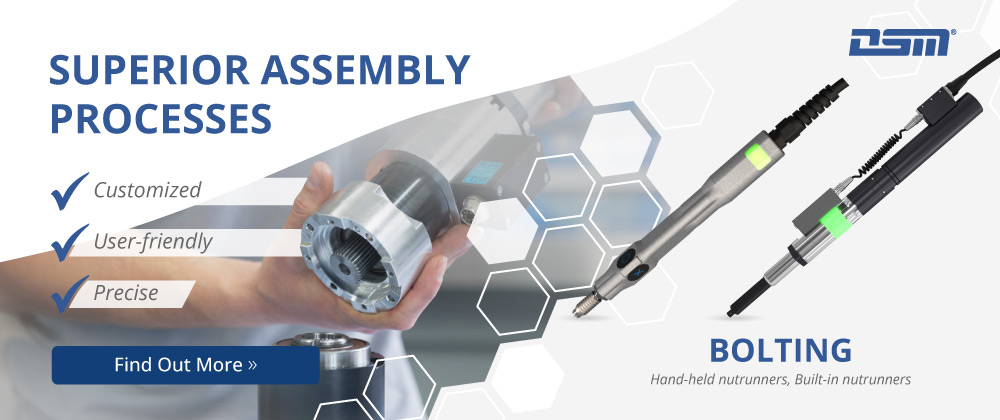Key Takeaways
- Definition and Operating Principle: A bolted joint connects at least two components using a screw, where tightening creates a tensile force in the thread, providing the necessary clamping or preload force.
- Purpose of Bolted Joints: They are used to join multiple elements so that they behave as a single unit and must withstand external influences such as temperature changes and mechanical loads without loosening on their own.
- Safety Requirements: A bolted joint is considered safe only when all loads are accounted for and it does not loosen by itself; standards such as ISO 5393, DIN 1319, and VDI 2230 define minimum requirements and testing standards for this.
A secure bolted connection is the foundation of numerous assembly processes in various industries.
Ensuring consistently high quality and safety is one of the main challenges in every company.
If the bolted connection fails on a component, the consequences can be severe, especially if it has been produced on a large scale.
This is why preventive error analyses, such as comprehensive quality assurance, are an integral part of production planning.
The foundation for quality management of any kind is always a precise understanding of the requirements for each bolt that is used.
What is a Bolt Connection?
The term ‘bolt connection’ defines the process during which at least two components are merged using a bolt.
A bolted connection is also typically characterized by the fact that it can be undone without damage.
Appropriately chosen for the material and correctly executed, a bolted connection can be undone repeatedly without the risk of material damage.
Often this is an important factor when it comes to the repair or modification of machinery, especially since the modularity of production machines is increasing continually.
The operating principle of a bolted connection is based on the generation of a tensile force in the thread, which is created by tightening with an appropriate tool (e.g., nutrunner, EC nutrunner).
A secure connection of the components is ensured by the combination of clamping force and preload force.
The correct torque
Since it is difficult to determine the clamping force, usually the torque is measured to check if the bolted connection meets the assembly requirements.
Proper Installation Matters! — Important Aspects of Bolt Connections
The purpose of bolted connections is to unite two or more elements so that they behave as one whole.
A classic day-to-day example is the attachment of wheels to a vehicle.
Attaching a wheel to a car appears to require a relatively simple bolted connection.
However, this impression is deceptive because the attached tires must withstand significant mechanical stresses daily to transport the driver from A to B safely.
The potential consequences of an insufficiently tightened bolted connection can be deadly in this case.
Basically, the following applies: All forces and external influences acting on bolted components, such as temperature changes, can cause elastic and / or plastic deformations and thus movement between individual parts.
Thus, the most important aspect of a high-strength bolt connection is ensuring the correct preload force, which provides the necessary clamping force to keep the connected components securely together and prevent relative movement.
This is why precise torque application during installation is of utmost importance.
Of Course, bolted connections can also be found on a large scale.
A steel bolted moment connection is a structural joint used to connect steel beams and columns.
It is designed to resist rotational forces and provide stability in building structures.
Another example are slip-critical bolt connections that are commonly used in structures subjected to tension, shear or bending loads.
What is slip-critical bolt connection?
A slip-critical bolt connection is a type of fastening method, where bolts are tightened to a specified tension to create friction between the connected surfaces to prevent relative movement under load.
This method is employed when building bridges and high-rise buildings.
Bolting Basics: Ensuring Safety and Stability
Secure Connection
A bolted connection is considered secure only if the combination of all loads does not lead to self-loosening.
To ensure a certain level of safety, there are guidelines and standards that focus on various aspects of bolt technology.
These European and German standards are among those commonly used in engineering and related industries:
- ISO 5393
- DIN 1319
- VDI 2230
Another standard is provided by the American Institute of Steel Construction (AISC).
Different Standards
While European standards use the metric system, AISC primarily employs English units like inches and pounds.
It also supports the International System of Units (SI), however it is really important to pay close attention to deviations.
The main objective of standardization is the precise definition of the influencing factors and minimum requirements for the bolt technology being used.
Additionally the testing and calibration of tools are also subject to specific standards.
Beyond Tightening: Decisive Factors that Affect Bolt Connections
Each bolted connection has specific characteristics that can be influenced by various factors.
Utilizing an Ishikawa diagram (also known as cause-and-effect diagram) is one possibility to illustrate those influences.
These 5 crucial factors can influence the quality of a bolted connection significantly:
| Factor | Example |
|---|---|
| Personnel | Choice of the wrong tool leads to an insecure bolted connection |
| Materials | Quality variations in material composition |
| Equipment | Malfunctions that are not immediately detected |
| Environment | Destabilization of the bolted connection by external influences, such as cold or heat |
| Methods | Assembly method and material do not match |
For businesses, the human element remains the most significant factor in the success of production processes.
Regarding bolted connections, proper training can considerably reduce errors and even reveal opportunities for enhancing quality or cutting costs.
That’s why ongoing, job-specific training focused on work processes and tool utilization is vital.
Looking for hands-on learning opportunities?
Empower your team with the latest skills and techniques!
Frequently Asked Questions (FAQ)
1. What factors contribute to the strength and durability of a bolted connection?
Key factors include proper preload application, appropriate bolt selection, correct joint design, and adherence to installation procedures. Ensuring these elements helps maintain joint integrity under various loads and conditions.
2. How does preload affect the performance of a bolted joint?
Preload, the initial tension applied during tightening, clamps joint components together, preventing movement and distributing loads evenly. Proper preload minimizes the risk of fatigue and loosening under dynamic conditions.
3. What are common failure modes in bolted connections?
Common failures include fatigue due to cyclic loading, loosening from vibration, thread stripping, and corrosion. Regular inspection and maintenance can mitigate these issues.
4. Why is torque control important in bolted assemblies?
Accurate torque application ensures the desired preload is achieved without over-tightening, which can damage components, or under-tightening, which can lead to joint loosening. Consistent torque application enhances joint reliability.
5. How can environmental factors impact bolted connections?
Environmental conditions like temperature fluctuations, humidity, and exposure to corrosive substances can affect material properties and joint integrity. Selecting appropriate materials and protective coatings helps mitigate these effects.
6. What role does bolt material and grade play in connection strength?
The material and grade determine the bolt’s mechanical properties, such as tensile strength and ductility. Choosing the correct grade ensures the bolt can withstand the application’s specific loads and conditions.
7. Are washers necessary in bolted joints?
Washers can distribute load, prevent surface damage, and reduce the risk of loosening. Their use depends on the application requirements and joint design.
8. How often should bolted connections be inspected?
Inspection frequency depends on the application’s criticality and operating conditions. Regular inspections help detect issues early, ensuring continued joint performance and safety.
Note: This FAQ is intended for general informational purposes and does not replace personalized advice. For specific inquiries, please consult a qualified specialist.






